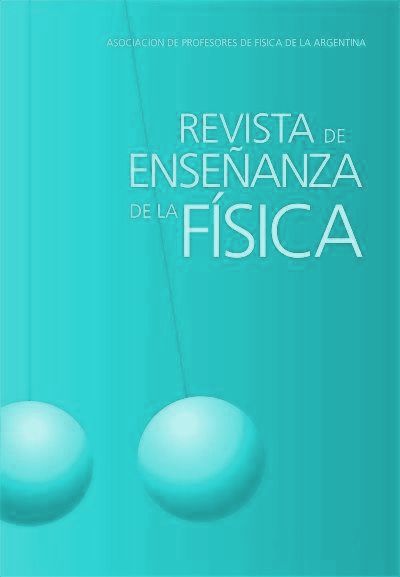Young's modulus learning by building large-scale device
Keywords:
Physics learning, Active methodologies, Physics teachers, Laboratories, Young's modulusAbstract
The present work analyses a laboratory experience for learning physics by using an active learning methodology. The design of the experimental device, the collection of measurements, the processing and analysis are carried out in an open space within the educational institution premises, both accessible and visible to all educational stakeholders. The activity, with the first-year physics teachertrainees involves the construction of a large-scale experimental device. Such a device is used to determine Young's modulus of a galvanized steel wire, by the amount of stretch it experiences when subjected to a pulling force. As a result, the students obtained a Young's modulus within the expected value range.
References
Chabay, R. W., Sherwood, B. A. (2015). Materia e interacciones I. Mecánica Moderna. Trillas.
Etkina, E., Van Heuvelen, A., Brookes, D. T. & Mills, D. (2002). Role of experiments in physics instruction - a process approach. The Physics Teacher, 40(6), 351–355.
Etkina, E. (2019). Can we teach students to think like scientists while learning science? Góndola, Enseñanza y Aprendizaje de las Ciencias, 14(2), 220-223. doi: http://doi.org/10.14483/23464712.14616
García, Á. F. (2010). Física con ordenador –Curso Interactivo de Física en Internet. Recuperado de: http://www.sc.ehu.es/sbweb/fisica/solido/din_rotacion/alargamiento/alargamiento.htm
Gil, S. (2014). Experimentos de Física usando TIC y elementos de bajo costo. Buenos Aires, Argentina: Alfaomega.
Hodson, D. (1988). Experiments in science and science teaching. Educational Philosophy and Theory, 20(2), 53-66. Doi: 10.1111/j.1469 -5812.1988.tb00144.x
Hooke, R. (1678). Lectures de potentia restitutiva, or, of spring explaining the power of springing bodies. London: Printed for John Martyn.
Millar, R. (1987). Towards a role for experiment in the science teaching laboratory. Studies in Science Education, 14(1), 109-118. Doi: 10.1080/ 03057268708559941
Downloads
Published
How to Cite
Issue
Section
License

This work is licensed under a Creative Commons Attribution-NonCommercial-NoDerivatives 4.0 International License.
Aquellos autores/as que tengan publicaciones con esta revista, aceptan los términos siguientes:Los autores/as conservarán sus derechos de copiar y redistribuir el material, bajo los términos estipulados en la Licencia de reconocimiento, no comercial, sin obras derivadas de Creative Commons que permite a terceros compartir la obra bajo las siguientes condiciones:
- Reconocimiento — Debe reconocer adecuadamente la autoría, proporcionar un enlace a la licencia e indicar si se han realizado cambios. Puede hacerlo de cualquier manera razonable, pero no de una manera que sugiera que tiene el apoyo del licenciador o lo recibe por el uso que hace.
- NoComercial — No puede utilizar el material para una finalidad comercial.
- SinObraDerivada — Si remezcla, transforma o crea a partir del material, no puede difundir el material modificado.
- Los autores/as podrán adoptar otros acuerdos de licencia no exclusiva de distribución de la versión de la obra publicada (p. ej.: depositarla en un archivo telemático institucional o publicarla en un volumen monográfico) siempre que se indique la publicación inicial en esta revista.
- Se permite y recomienda a los autores/as difundir su obra a través de Internet (p. ej.: en archivos telemáticos institucionales o en su página web) antes y durante el proceso de envío, lo cual puede producir intercambios interesantes y aumentar las citas de la obra publicada. (Véase El efecto del acceso abierto).














